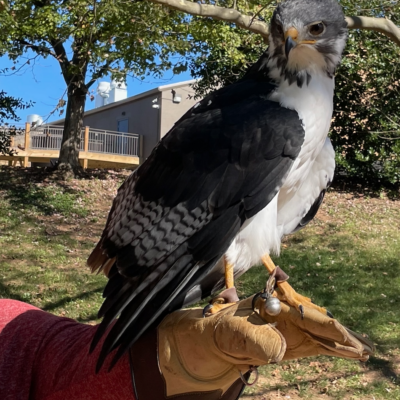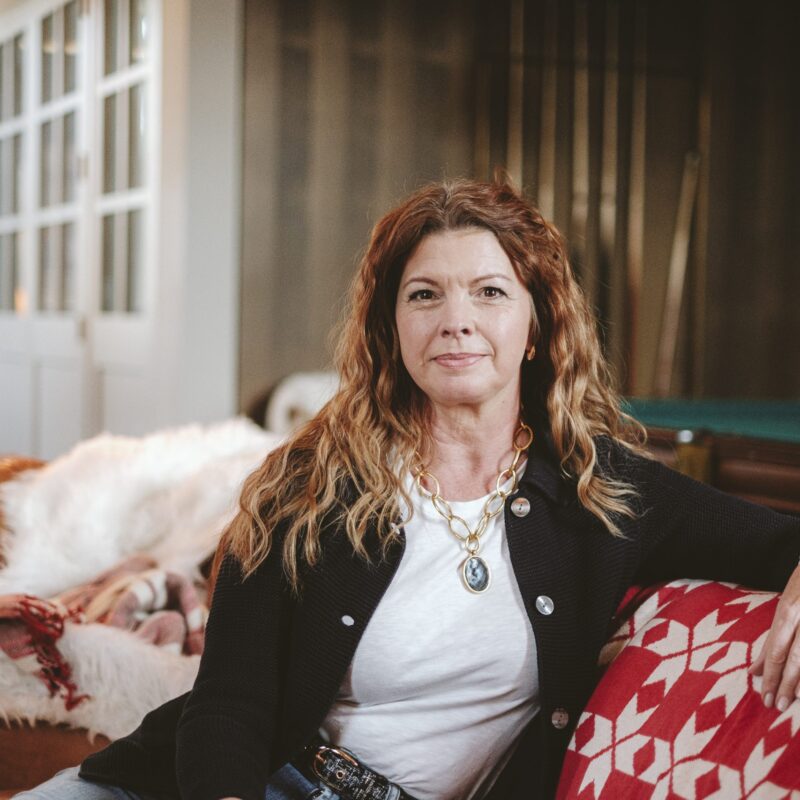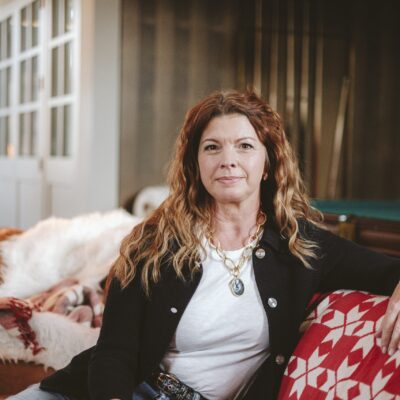There are times as a journalist that you know you’re not going to get the story. You’re going to get a story, but you’re not going to get the story. That’s how I felt going into my interview with Grandmaster Wang Fu-Lai: Taiwanese martial arts master, lineage holder of the Cheng-Ming system, and the teacher of Hiromi Johnson, who runs Hiromi T’ai Chi Cheng-Ming Martial Arts Association Charlottesville Branch on the corner of Seventh and Market streets in Downtown Charlottesville.

Senior students at Hiromi T’ai Chi perform a sword form during Grandmaster Wang’s visit. Photo: John Robinson
There were a number of things that made me feel like I wasn’t going to get the story. First was that Grandmaster Wang does not speak English that well, or at least doesn’t feel comfortable speaking it to a journalist, so his daughter Monica translates for him. I do not speak Mandarin, Taiwanese, or Japanese. Working through a translator is always hard, especially when you’re trying to ask a martial arts master with a worldwide network of students what makes his system stand apart. There is no shared vocabulary to work from; no direct mode of communication.
We were sitting around a little portable table in Hiromi’s studio having tea. Hiromi, who had arranged the interview, has spent three decades learning Cheng-Ming, a system of movement and intention that combines the three internal Chinese traditional martial arts as defined by the Nanking Central Martial Arts College in 1929: T’ai Chi, Hsing-I, and Pa Kua. A quiet, careful speaker, she had told me the week before:
“For me, a teacher plays about 99 percent role in learning. If you don’t have a good teacher, everything you do is a waste of time.”
Here was her teacher. A man who learned as a boy from a legendary practitioner and had helped consecrate one of the official 100-step T’ai Chi forms recognized by the Taiwanese government.
So what’s this, uhhh, Cheng-Ming thing all about, sir?
You have probably never heard of Grandmaster Wang Fu-Lai and you may not have ever heard of Hiromi. I hadn’t either. Before I moved to Charlottesville. I spent three years studying Chinese martial arts in Boston with a teacher named Dr. Kay-Chi Leung and his wife Master Lin-Lin Harn at the American Jiann Shyong Kung Fu Center. They taught a martial arts system that integrated Chinese external martial arts like Northern Shaolin with internal martial arts T’ai Chi, Hsing-I, and Pa Kua passed down from their teacher, Han Ch’in T’ang, a graduate of the Nanking Central Martial Arts College. I didn’t progress very far as a student, but I did sort of heal my back and my knee, which is what I’d been after when I walked in the door.
Dr. Leung used to tell me teasingly, “Morris, mostly after surgery not the same.” His meaning crystal clear, as ever.
I also came away with a profound respect for Chinese martial arts, for their specificity and depth. That experience led me to take seriously a neighbor’s suggestion that I look up Hiromi, and when the chance to interview Grandmaster Wang during one of his twice annual visits to the studio came up, I jumped at it.
There I was, though, with a half hour to ask questions, knowing enough about Chinese martial arts to know you have to know a lot before you get to ask questions. And even then, you only get little bits of the answers, mostly because the answers come in time and practice through dedication to the system and not merely because you are curious.
I asked a question early in the interview about the significance of the decision to take on an indoor student. In Chinese martial arts, you have regular students (hsueh-sheng), and indoor students (men-jen). Indoor students are invited by a master to carry on their specific tradition. They undergo a formal ceremony that involves an altar and vows and their names are inscribed in the official roles of the lineage in perpetuity. That explanation kind of gives you an idea how hierarchy is delineated, but it doesn’t adequately convey the significance of the responsibility felt between a teacher and student.
Hiromi is Grandmaster Wang’s last indoor student. Late in the interview, while responding to a different question, Grandmaster Wang said, “In traditional Chinese internal martial arts, we emphasize the moral dimension. Because when your technique reaches a high level, if your moral level is not the same, you will hurt other people.”
And after Monica had translated that, he continued:
“Excellent Chinese martial artists are everywhere. They are like hermits and they are at every level in every business. They are not going to show off their technique. They go on with their daily lives. But if you look closely at them, then you will know who they are. Hermits in Chinese culture help the people insist on what is right. When there are conflicts, they help the society stay straight. Every time I visit Charlottesville, I see that the students are practicing, that they are happy, which means their moral attitude is good. That means the instructor has guided them right. I see that Hiromi-san has guided the students well, and that makes me happy.”
Hiromi-san
Hiromi Johnson was born in Tokyo in 1955 at a time of cultural upheaval. Devastated by World War II both physically and psychologically, the Japanese undertook a rebuilding process that encouraged looking abroad for influences.
Hiromi, who described herself as a weak child who was left out of physical education at school because of recurring fainting spells, was a cause of concern to her parents. After two separate surgeries in her early teens, she still could not bend her knees fully.
“In Japan to be a good wife and to get married the women have to be able to sit uprightly with folded legs which I couldn’t do, so my parents were really worried,” she said.
After various rehabilitation programs failed, family friends recommended a Chinese martial art that was being taught near her home, so at the age of 20, she began to learn a 24-step simplified form of T’ai Chi created by the Chinese government. She still remembers, with apparent immediacy, her first attempts at T’ai Chi as a young woman.
“I didn’t move my body before, so I was really, really awkward. Tears came up. I felt I couldn’t do it,” she said. “But I liked the Ch’i Kung, the meditation.”
Half-way through Hiromi’s training, her teacher stopped coming to class. No explanation, no clues. She just vanished. Hiromi got on with her life, continued studying T’ai Chi with books as her legs gradually grew stronger. But she knew her practice was aimless. She needed a teacher to check her postures.
That didn’t happen for her until when, at 33, she was working as a full-time secretary to a fashion journalist in the Roppongi district of Tokyo, site of embassies, nightclubs, and many foreign nationals, and she stopped for lunch at a discreet little restaurant.

Grandmaster Wang Fu-Iai was born in 1941 in Tso-tun, Taiwan. He studied internal martial arts with Great Grandmaster Wang Shu-chin for 38 years as his principal students, learning a subtle system of Chinese martial arts that originated in the Zhong Nan Mountains of northern China. Photo: John Robinson
“It said ‘Health Food Restaurant.’ And I went in and I was eating lunch and here comes a bald head man with running shorts and sits across from me and says ‘How’s the food?’,” Hiromi recalled with an air of disbelief. “We started to talk and he said, ‘You know, I think you need a T’ai Chi practice.’ I had been looking for a teacher all those years.”
The man was Yutaka Ueda, the restaurant’s owner, and a Japanese national who had learned Cheng-Ming from its founder, Wang Shu-chin, sometimes called the Father of T’ai Chi in Japan. (See sidebar for more on Wang Shu-chin).
To make a long story short, Wang Shu-chin was sent by the Taiwanese government as a cultural ambassador to Japan to spread traditional Chinese martial arts teaching. Ueda, a student of Wang Shu-chin’s, invited Hiromi to participate in his morning T’ai Chi practice at Temple Ground. The class was free, but it required her to take two trains and walk 20 minutes to cover the hour-and-a-half commute. Practice started at 6 a.m. Hiromi felt a strong rapport with Ueda, so she made the trip, joining 12 much older students and, in the traditional learning style, following their movements with little explanation. She woke up at 4:30 every morning for a year until she learned the basic form at which point Ueda told her she was ready to progress, and referred her to his kung fu brother, Wang Sheng-zhi, another of Wang Shu-chin’s disciples.
Martial arts is more literally translated as wushu. Kung fu connotes any sort of technical mastery or achievement through a discipline, but the terms have been conflated in American popular culture. A kung fu “brother” or “sister” is someone who practices your discipline under the same master.
The owner of a well-known Chinese restaurant called Hokkaien, or “Paradise of the Northern Sea,” Wang Sheng-zhi had a small dojo on tatami mats with one piece of mirror. Ueda had warned Hiromi that his kung fu brother wouldn’t speak to her. She stood directly behind him for two hours every Sunday morning for seven months until she could practice the form correctly from memory.
“When I was learning the form those seven months, he didn’t even look at me,” Hiromi recalled. “He spoke to other students, but I was totally out of the group. The other students told me not to quit. They said he was only trying to check if I was really committed or not. That, I found, is a very traditional way.”
One morning she was asked to sit next to the master during the group’s lunch at Hokkaien. Hiromi remembers feeling an overwhelming sense of gratitude. She had become a serious student.





